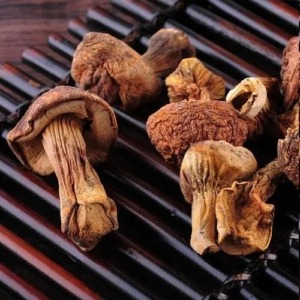Agaricus blazei, also known as God’s mushroom, Mushroom of life, Royal Sun Agaricus, Mushroom of the Sun, or Almond mushroom. This is an edible mushroom with identified beneficial health effects, like preventing diabetes, hyperlipidemia, arteriosclerosis, and chronic hepatitis. Agaricus blazei is vastly used in traditional medicine as a medicinal extract for the prevention and treatment of cancer, as it shows strong immunomodulating properties. Potential antigenotoxic and antimutagen activities have been reported.
In this study, we assessed the genotoxicity and antigenotoxicity effects of Agaricus blazei on human peripheral blood cells. DNA strand breaks were measured using a simple and reproducible technique, the comet assay. DNA is a sensitive molecule compared to many other macromolecules, and damage may result from exposure to exogenous agents. Prolonged or repeated DNA damage and genomic instability can contribute to multiple diseases, including cancer.
The current result shows no genotoxic effects of A. blazei on human peripheral blood cells. The exposure of cells to the mushroom in our experiment even reduces the baseline level of DNA damage. Meanwhile, the beneficial role of Agaricus blazei in reducing H2O2-induced DNA damage in whole blood cells was demonstrated as positive control quercetin was used. Quercetin is a standard antioxidant that effectively reduces H2O2-induced DNA damage. In this experiment, quercetin’s reduction of DNA damage confirmed that a ROS attack on the DNA underlies the origin of strand breaks. Therefore, it can be noted that Agaricus blazei also exhibited effective attenuation of free radical-induced DNA strand breaks.
To elucidate the possible mechanism behind the antigenotoxic action of the A. blazei, two approaches were applied to investigate whether the mushroom could act at the preventive and interventional levels. In pretreatment conditions, A. blazei was added to cells 30 min before administration of the oxidant, allowing them to be active at the prevention level. Under pretreatment conditions, the mushroom may increase the cells’ antioxidant capacity, making them more resistant to oxidative DNA damage. The pretreatment results showed a moderate decrease in DNA-damaged cells, where 500 μg/mL concentration displayed a significant protective effect against H2O2. The administration of A. blazei protected the brain of old rats against oxidative stress by increasing the brain’s enzymatic antioxidant capacity, showing an inducible effect on their activities. Also, the action of an A. blazei pretreatment on the paracetamol injury in rats exhibited the ability to boost the levels of catalase.
On the other hand, posttreatment data displayed a significant decrease in the number of cells with DNA damage at all tested concentrations showing prominent interventional activities of A. blazei. The antigenotoxic effect of A. blazei seen after treatment could be assigned to the synergistic action of independent mechanisms which possibly contributed to DNA damage reduction: free radical scavenging and stimulation of DNA repair.
Mushrooms can demonstrate their antioxidant properties at different stages of the oxidation process and by other mechanisms. This study examined the antioxidant properties of OH radicals and DPPH radicals by reducing power and scavenging abilities. The reducing power of Agaricus blazei showed a concentration-dependent trend and was 0,3 at 2 mg/mL, considered moderate.
The scavenging ability is important antioxidant protection against the high reactivity of free radicals. Our data on DPPH scavenging ability showed that the activity of A. blazei was extremely modest. This could be explained by the fact that the antioxidant activity of natural compounds is associated with their structures and accessibility to the radical center of DPPH. It should be emphasized that we evaluated the ability of Agaricus blazei as a mushroom in its dried and powdered mycelial form dissolved in PBS, so the structure of its compounds could affect its antioxidant abilities.
On the other hand, A. blazei in our study showed pronounced OH scavenging properties for concentrations above 0,196 mg/mL. Hydroxyl radical is the most reactive chemical species known to induce oxidative damage to proteins, lipids, and DNA. Accordingly, compounds with OH scavenging properties are extremely important in biological systems. It should be noted that the application of A. blazei in the posttreatment comet assay provided the best attenuation of DNA damage at the 250 μg/mL concentration and, at the same time, showed 70% inhibition of OH radical.
A time course of DNA repair in the cells treated with the optimal concentration of Agaricus blazei was investigated and compared with untreated cells (exposed only to PBS). Data showed that posttreatment with the mushroom significantly decreased the level of cells with DNA damage in the 15, 30, and 45-time course. In contrast, the cells treated only with PBS did not display a significant reduction of DNA damage in the same time frame. It should be mentioned that a similar trend in DNA damage reduction was detected in both experimental conditions: a decrease in DNA damage was observed already at 15 min, reaching the maximum reduction after 45 min. Previous studies showed that significant repair of DNA damage occurred within one hour after exposure to the oxidative agent.
Therefore, those results indicate that Agaricus blazei could significantly stimulate the repair process in DNA-damaged cells. The repair capacity of cells treated with mushrooms is more efficient than the repair capacity of untreated cells. Another study showed a protective effect of β-glucan extracted from Agaricus blazei on the expression of the genes ERCC5 (involved in excision repair of DNA damage) on HepG2 cells.
Bearing in mind that the efficiency of pretreatment can be explained by Agaricus blazei property of increasing the cells’ antioxidant capacity, a possible synergistic (additional) mechanism of posttreatment action could be the stimulation of the antioxidant enzyme.
Agaricus blazei activity on the interventional level can be attributed to its scavenging properties, stimulation of DNA repair, as well as additional antioxidant enzyme activation. It should be especially emphasized that for the first time, it has been revealed that Agaricus blazei has strong potential in the reduction of OH groups.
Our study was conducted as an in vitro test, which should contribute to highlighting Agaricus blazei as an antioxidant that attenuates the impact of oxidative stress on DNA.

Leave A Comment